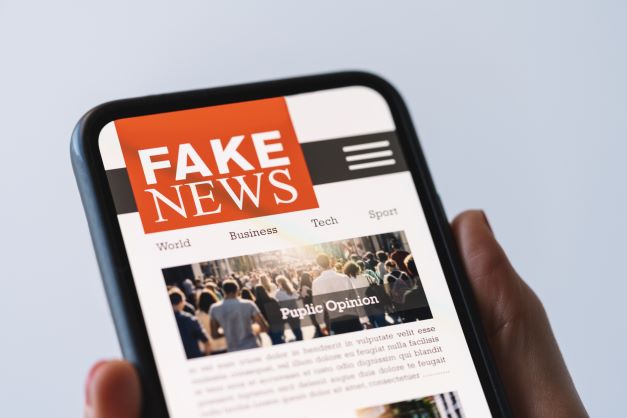What is Fake News?
Fake news isn’t a new phenomenon, but with the rise of social media and the growing accessibility of information online, it has become far more prevalent—and harmful—than ever before. For many, spotting fake news can feel like navigating a minefield, especially with the sheer volume of content being shared daily.
What is it?
Fake news refers to information that is deliberately false or misleading, designed to deceive readers or provoke a particular emotional response. It can take many forms, from completely fabricated stories to manipulated images or headlines taken out of context. The primary purpose of fake news is often to:
- Push a political agenda
- Generate clicks and ad revenue
- Spread fear or confusion
- Damage reputations.
Common platforms for fake news are typically online spaces like Facebook, WhatsApp, and Twitter, where stories can go viral within minutes.
What is the impact?
The effects of fake news can be far-reaching and harmful. It can lead to increased distrust in legitimate news sources, foster confusion about important issues, and even contribute to division within families or communities. Seniors are often targeted with fake news campaigns because they’re seen as more trusting of information they receive.
For example, false medical news or miracle cures aimed at older people can lead to significant risks, both financially and health-wise. Similarly, fake news about politics or current events can cause undue stress or influence decisions based on false information.
How to spot fake news
While fake news can be hard to detect at first glance, there are signs you can look for. These tips will help you evaluate content critically before believing, and sharing it:
Check the source
Legitimate news is almost always published by reputable outlets. If you’ve never heard of the source, spend a few minutes verifying its credibility. Does the website look professional? Is the “About Us” page clear about ownership and editorial standards?
Examine the headline
Sensational or clickbait-style headlines often indicate fake news. If a headline seems outrageous, deliberately provocative, or too good (or bad) to be true, be sceptical.
Look for supporting evidence
Reliable news stories will typically cite experts, provide links to studies, or include detailed information to back up claims. If a story doesn’t have any references or sources, it’s a red flag.
Evaluate the writing quality
Legitimate news outlets prioritise clear and grammatically correct writing. Fake articles often include spelling mistakes, awkward phrasing, and inconsistent facts.
Verify the author
Does the article provide the author’s name and credentials? Many fake news articles are posted anonymously or by individuals with no journalistic background.
Check the date
Old news stories often resurface with misleading claims or implications tailored to current events. Always check when the story was published.
Verify the images
Images can be edited or taken out of context to mislead readers. Use reverse image search tools (like Google Images) to determine if a picture has been altered or is being used misleadingly.
Cross-reference the content
If a story is legitimate, it will likely appear in multiple reputable publications. If only one outlet is reporting it—or if it’s exclusively circulating on social media—doubt its authenticity.
Recognise emotional manipulation
Fake news often plays on strong emotions like fear, anger, or shock. Be cautious of articles that feel designed to provoke an intense reaction.
Use fact-checking websites
Websites like Snopes.com and FactCheck.org specialise in debunking false claims and fake news stories. They are invaluable tools for verifying information.
How to avoid fake news
Now that you know how to spot fake news, here are some steps you can take to limit your exposure and minimise the harm it can cause:
Use trusted news sources
Stick to well-known and reputable news organisations with a long history of fact-checking and journalistic integrity. Subscribing to these outlets can ensure that the news you consume is accurate.
Install fact-checking browser extensions
Tools like NewsGuard and extensions by fact-checking organisations can rate websites for accuracy, making it easier to identify dodgy sources.
Pause before sharing
Sharing false information—even unintentionally—amplifies its reach. Before forwarding content to others, take a moment to recalculate your own response and ask, “Is this real, and is this helpful?”
Stay educated
Attend workshops or read up on digital literacy and critical thinking. Many libraries and community centres host sessions to help people identify and avoid fake news.
Stick to verified social media accounts
Most major platforms, like Facebook and Twitter, provide verification ticks for trusted organisations and public figures. Information coming from these accounts is more likely to be accurate.
Reporting
If you spot a story you know is fake, don’t ignore it. Many platforms now have options to flag false content, helping to reduce its spread.
By becoming more informed and sceptical of what we see online, we can help reduce the spread, ensuring that others are not misled. Tackling fake news also fosters a more trusting and truthful digital environment where genuine content can flourish.
At the end of the day, knowledge is power. Stay informed, stay curious, and don’t hesitate to engage in thoughtful discussions with others about the importance of fighting misinformation. Together, we can create a safer and more accurate digital space for everyone.
Interested in similar articles? Why not check these out:











